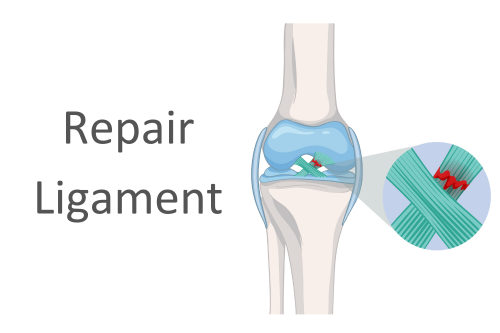
What is Avascular Necrosis of the Hip | Causes and Treatment
Avascular Necrosis (AVN) of the hip is a debilitating condition that can significantly impact one’s quality of life. It occurs when the blood supply to the femoral head—the ball of the hip joint—is disrupted, causing bone tissue to die. This can lead to the collapse of the femoral head and severe arthritis if untreated. Understanding AVN of the hip, its causes, symptoms, and treatment options is vital for early intervention and better outcomes.
In this blog, we’ll delve into the details of AVN of the hip, focusing on its causes, symptoms, and available treatments. If you’re seeking expert advice or treatment, Joint Replacement Delhi, led by the renowned orthopedic surgeon Dr. Anil Arora, provides advanced care for conditions like AVN of the hip.
What is AVN of the Hip?
Avascular Necrosis of the hip, also known as osteonecrosis, results from the interruption of blood flow to the femoral head. Bone tissue, like any other tissue in the body, needs a constant blood supply to stay healthy. Without adequate blood flow, the bone becomes weak, collapses, and can lead to the destruction of the joint.
This condition often progresses silently in its early stages, making early detection critical. If left untreated, AVN of the hip can lead to arthritis and necessitate joint replacement surgery.
Causes of AVN of the Hip
Traumatic Causes:
1. Hip Fractures:
A break in the hip bone can damage the blood vessels supplying the femoral head.
2. Hip Dislocation:
When the hip joint is dislocated, it can cut off blood flow to the femoral head.
Non-Traumatic Causes:
1. Corticosteroid Use:
Long-term or high-dose use of steroids can lead to fat deposits in blood vessels, reducing blood flow.
2. Alcohol Consumption:
Excessive alcohol can also cause fat deposits in blood vessels, leading to blockages.
3. Medical Conditions:
Certain diseases such as sickle cell anemia, lupus, and Gaucher’s disease increase the risk of AVN.
4. Radiation Therapy:
Radiation can weaken bones and damage blood vessels, leading to osteonecrosis.
5. Blood Clotting Disorders:
Conditions that cause blood clots can block the blood supply to the femoral head.
6. Idiopathic Causes:
In some cases, the cause remains unknown.
Symptoms of AVN of the Hip
Symptoms vary depending on the stage of the disease:
1. Early Stage:
Often asymptomatic or mild pain during physical activities.
2. Progressive Stage:
Persistent pain in the groin, thigh, or buttock. Pain may worsen with weight-bearing activities.
3. Advanced Stage:
Significant joint damage and limited mobility, often requiring surgical intervention.
What Are the Benefits of Arthroscopic Surgery?
Arthroscopic surgery offers several advantages over traditional open surgery:
- Minimally Invasive: Small incisions mean less tissue damage and quicker recovery.
- Shorter Recovery Time: Patients often return to daily activities faster than with open surgery.
- Lower Risk of Complications: Smaller incisions reduce the risk of infections and bleeding.
- Outpatient Procedure: Many procedures are done as day-care, allowing patients to return home same-day.
- High Accuracy: The arthroscope’s magnified view allows for precise diagnosis and treatment.
What to Expect After Arthroscopic Surgery
Recovery depends on the procedure type and the joint involved. Here’s a general timeline:
- Immediately After Surgery: You’ll recover in a recovery room; most go home same day.
- Pain and Swelling: Common post-surgery but manageable with medication and ice.
- Physical Therapy: Essential to regain strength and mobility, guided by a physiotherapist.
- Return to Normal Activities: Light activities resume within weeks; full recovery may take months.
Are There Any Risks or Complications?
While generally safe, arthroscopy carries some risks:
- Infection
- Blood clots
- Nerve or vessel damage
- Persistent joint stiffness or pain
Who Is a Good Candidate for Arthroscopic Surgery?
Anyone with unresolved joint pain, stiffness, or reduced mobility may be a candidate. Suitability depends on diagnosis, condition, and medical history.
Myths vs. Facts About Arthroscopic Surgery
Myth: Arthroscopy is only for athletes.
Fact: It benefits anyone with joint issues.
Myth: Recovery is instant.
Fact: It’s faster than open surgery, but recovery still takes time.
Myth: Arthroscopy cures arthritis.
Fact: It may help with symptoms but doesn’t cure the disease.
Tips for a Smooth Recovery
- Follow Doctor’s Orders: Take medicines and follow activity restrictions strictly.
- Attend Physical Therapy: It's crucial for full recovery.
- Stay Active Gradually: Ease into physical activity only when cleared by your doctor.
- Manage Pain: Use ice, elevate the joint, and take prescribed medication.
Final Thoughts
Arthroscopic surgery is a safe and effective option for managing joint issues. Whether you're recovering from an injury or dealing with chronic pain, it can significantly improve your mobility and quality of life.
Consult a qualified orthopedic specialist like Dr. (Prof.) Anil Arora to explore if this is the right treatment for you.




